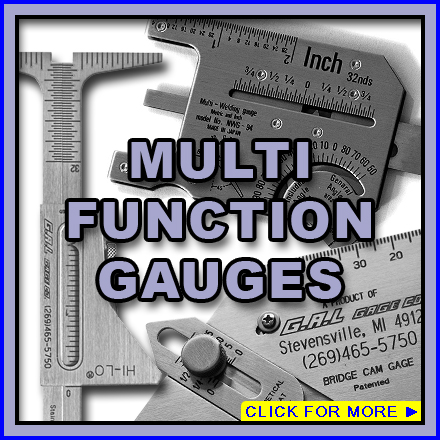Fillet Weld Layout Techniques: Maximizing Joint Performance and Aesthetic Appeal for Structural Integrity
In the world of architectural engineering and manufacture, the value of fillet weld layout techniques can not be overstated. These approaches play a crucial role in not just ensuring the efficiency and architectural honesty of joints but likewise in enhancing the total aesthetics of the finished product. By diligently considering elements such as weld profile optimization, product option, joint prep work techniques, welding procedure performance, and aesthetic improvement designers, producers and methods can attain an unified balance in between functionality and appearance in their welded frameworks. The blend of these elements not only causes robust joints however also boosts the visual allure of the end product.
Weld Account Optimization


Achieving an optimum weld profile involves a meticulous consideration of factors such as product thickness, joint arrangement, welding placement, and preferred welding speed. In addition, the option of appropriate welding specifications, such as voltage, existing, and take a trip rate, is fundamental in controlling the shape and measurements of the fillet weld. Using advanced welding methods, such as pulse welding or robot welding, can further refine the weld profile to satisfy specific layout demands and quality standards.
In essence, weld account optimization is a basic element of fillet weld style that straight affects the total performance and reliability of bonded joints in architectural applications.
Product Choice Considerations
When considering material choice for fillet weld style, the compatibility of the base metals is a crucial variable affecting the architectural integrity of the joint. It is vital to pick materials that not just weld with each other properly however also have similar mechanical residential properties to make sure the lots is uniformly dispersed between the base and the weld metals. Welding products with vastly various residential properties can cause concerns such as stress concentrations, early joint failure, or breaking.
In addition, the atmosphere in which the welded structure will run have to be taken into account when choosing materials. Elements like corrosion resistance, temperature level fluctuations, and exposure to chemicals can all affect the long life and efficiency of the weld joint. By selecting products that are suitable for the designated application and setting, the overall durability and dependability of the bonded joint can be dramatically enhanced.
For that reason, complete factor to consider of product compatibility and environmental aspects is paramount in making certain the weld joint's strength, longevity, and total architectural stability.

Joint Preparation Strategies
Taking into consideration the crucial role product option plays in making certain the architectural stability of fillet weld joints, it is essential to carry out specific joint prep work techniques that enhance the connection in between the base steels. Joint prep work is a critical step that straight affects the quality and toughness of the weld.
Additionally, tack welding the components in place prior reference to the last weld helps maintain placement and reduces distortion throughout the welding process. By meticulously following these joint preparation strategies, welders can boost the total performance and aesthetic appeals of fillet weld joints while guaranteeing structural strength.
Welding Refine Efficiency
Reliable welding processes are essential for accomplishing optimal performance and top quality in fillet weld manufacture. Procedures like gas steel arc welding (GMAW) and flux-cored arc welding (FCAW) are frequently used for fillet welds due to their versatility and rate.
Normal calibration of welding machines, assessment of consumables, and upkeep of welding lanterns can stop downtime and rework, eventually saving time and sources. Well-trained welders are more experienced at changing specifications, fixing concerns, and keeping consistent weld quality.
Visual Improvement Techniques
To maximize the high try this site quality of fillet weld manufacture, applying aesthetic enhancement techniques can play an essential role in guaranteeing accuracy and accuracy throughout the welding process. Visual improvement techniques incorporate numerous techniques targeted at improving the look and high quality of fillet welds. One typical method is the usage of back purging systems to eliminate oxidation on the backside of the weld, resulting in a cleaner, extra cosmetically pleasing surface. In addition, utilizing proper lighting plans in the welding location can boost exposure, enabling welders to check the weld swimming pool and make sure constant bead development. Aesthetic aids such as weld size determines and magnifying lenses can help in assessing weld accounts and measurements properly. In addition, using contrasting noting products or temporary tacking can aid in lining up and placing the workpieces exactly before welding. By incorporating these visual improvement methods right into the welding process, welders can accomplish not just structurally audio fillet welds yet likewise aesthetically attractive outcomes that satisfy industry standards.

Conclusion
Finally, maximizing fillet weld design includes careful factor to consider of weld account, product choice, joint prep work, welding procedure performance, and aesthetic enhancement techniques. By carrying out these strategies, architectural stability can be improved while likewise accomplishing visual appeal. It is necessary to prioritize both efficiency and appearances in fillet weld style to ensure the overall quality and resilience of the joint.
By carefully considering variables navigate to these guys such as weld profile optimization, material choice, joint preparation methods, welding process effectiveness, and aesthetic enhancement designers, approaches and fabricators can attain a harmonious equilibrium in between capability and appearance in their bonded structures.In the world of fillet weld layout, maximizing the weld account plays an important function in guaranteeing architectural integrity and efficiency. The weld profile, which consists of the dimension and shape of the weld cross-section, directly influences the distribution of stress and anxiety and load-bearing ability within the joint. It is important to choose products that not just weld together effectively yet also have comparable mechanical properties to make certain the tons is uniformly distributed between the base and the weld metals - Gauge Fillet Weld.In conclusion, optimizing fillet weld design involves mindful factor to consider of weld account, material selection, joint prep work, welding process performance, and visual enhancement techniques